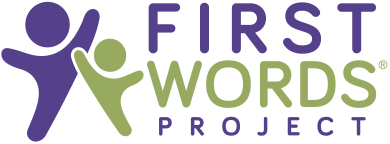Good communication development starts in the first year of life and goes far beyond learning how to talk. Communication development has its roots in social interaction with parents and other caregivers during everyday activities. Your child’s growth in social communication is important because it helps your child connect with you, learn language and play concepts, and sets the stage for learning to read and future success in school. Good communication skills are the best tool to prevent behavior problems and make it easier to handle moments of frustration that all infants and toddlers face.


Key social communication milestones develop between 9 and 16 months and they provide the foundation needed to launch language and learning:
- use eye gaze and facial expression to share emotion—both enjoyment/interest and frustration/distress
- use eye gaze and communication to share attention, interests, and ideas
- communicate at an increasing rate with gestures, sounds, and a few words sprinkled here and there
- use a variety of actions with objects in play and other everyday activities
- understand the meaning of spoken words
If these early social communication milestones are not solidly in place, it is likely that a child will be delayed in learning to talk. It is important to keep in mind that delays in these social communication milestones may indicate risk for developmental delays, including autism. By detecting small gaps in early social communication skills, you can get extra help to support your child’s development before significant delays are evident.
About the 16 by 16™ Series
The 16 by 16™ series is designed to help families and others learn the critical social communication skills that children should reach by 16 months in order to launch language learning, literacy, and much more by 24 months. To present the 16 by 16 series, we are developing a collection of online lookbooks to illustrate with photographs each of the critical skills. Our first two lookbooks, 16 Gestures by 16 Months and 16 Actions with Objects by 16 Months are now available. We plan to release three additional lookbooks in the near future.
-
Language Learning: 16 Gestures by 16 Months
-
Imagination: 16 Actions with Objects by 16 Months
-
Social Connectedness: 16 Ideas to Communicate by 16 Months
-
Cooperation: 16 Ways to Manage Emotions by 16 Months
-
Critical Thinking: 16 Messages to Understand by 16 Months
16 Gestures by 16 Months (Language PDFs)
Select a 16 by 16™ language below:
We hope this series will provide a roadmap for you to support your child’s early development and celebrate these important small steps your child is making. This information can also help you notice small delays early in order to prevent bigger delays later. Some children who are late in communicating outgrow delays, but others need extra help to reach their potential. This can give all children an edge before preschool to better prepare for success in Kindergarten.

If a picture is worth a thousand words, imagine what a video is worth.
Our Social Communication Growth Charts let you explore extensive video footage of children within the 5 developmental domains — language, play, social competence, emotional regulation, and self-directed learning — so you can appreciate the many skills your child is learning. These Growth Charts allow you to keep track of your child’s social communication milestones over time. You will see where your child is at the present moment and what’s next in development.
- Explore all the milestones in 5 domains from 9 to 24 months of age.
- Watch video examples of the milestones and learn how to support development of each milestone.
- Chart your child’s development from 9 to 24 months.
Earlier is Better

Catching communication and language problems early can prevent potential problems later with behavior, learning, reading, and social interaction. Research on brain development reminds us that “earlier is better” when teaching young children. The most critical period for learning is during the first three years of a child’s life. Pathways in the brain develop as infants and young children learn from exploring and interacting with people and objects in their environment. The brain’s architecture is developing the most rapidly during this critical period and is the most sensitive to experiential learning. By age 3, most of the major brain circuits are mature, and later it becomes more difficult to make significant changes in a child’s growth trajectory.
For more information, see “The Science of Early Childhood Development” at the Center on the Developing Child | Harvard University.
How you can help.
You can help support the FIRST WORDS Project.

